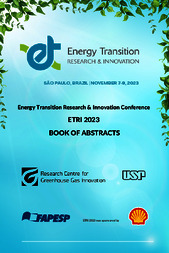Integrated crop-livestock systems and well-managed pasture promote biological activity, aggregates stability and the increase of soil organic carbon in southern Amazon, Brazil.
Integrated crop-livestock systems and well-managed pasture promote biological activity, aggregates stability and the increase of soil organic carbon in southern Amazon, Brazil.
Author(s): PIMENTEL, M. L.; TENELLI; ANDRADE, N. de; NASCIMENTO, A. F. do; CARVALHO, J. L. N.; CHERUBIN, M. R.; ANDREOTE, F. D.; CERRI, C. E. P.; BORDONAL, R. de O.
Summary: Abstract: Integration crop-livestock (ICL) systems are known to have higher diversity of roots and crop residues that favor microbial activity and increase the potential of soil carbon (C) sequestration. This study aimed to investigate the impact of different integrated agricultural systems on microbial indicators, total C content and aggregation over eleven-year period. A field experiment was conducted in a randomized block design with four replications and four treatments: Crop succession (CS) - annual production of soybean (Glycine max L.) followed by corn (Zea mays); Integrated crop-livestock system (ICL) - a rotation system of four years with soybean/corn production in the first year, soybean/corn + braquiaria (Brachiaria brizantha cv. Marandu) in the second year, and followed by two years of pasture associated with cattle production; Pasture (P) – continuous cultivation of Brachiaria brizantha (cv. Marandu) with cattle production; and Integrated crop-livestock-forest system (ICLF) – similar to ICL system, with the eucalyptus as additional forest component. Soil samples were collected to a 0.3 m depth, in which the total C, total nitrogen (N) contents, microbial biomass carbon (MBC), glomalin, enzymatic activities of ? glucosidase, acid phosphatase and arylsulfatase were measured. In addition, the soil structural quality was measured from the mean weight diameter (MWD) of aggregates. Our findings revealed that P and ICL increased C (28%) at 0.1 m and N content at 0.05 m depths, while MBC was higher (50%) in all layers evaluated as compared to CS, thus indicating that MBC is more sensitive to management change relative to C content. Similar results were found for enzyme activity, especially at 0.05 m layer for all enzymes. Regression analyses proved that C accrual was triggered by the increase in enzyme activity, due to the role of C as energy source for the microbiota. We found lower C/N ratio under ICL, and higher microbial quotient (qmic) under ICL and P, suggesting a better C utilization by the microorganisms. MWD and glomalin increased under P, ICL and ICLF at 0.1 m, indicating higher soil aggregation in these systems. Our study suggests that ICL and P systems play an important role in C accumulation by favoring microbial activity and soil aggregation when compared to more conventional cropping systems.
Publication year: 2023
Types of publication: Paper in annals and proceedings
Keywords: Enzima, Matéria Orgânica, Solo
Observation
Some of Embrapa's publications are published as ePub files. To read them, use or download one of the following free software options to your computer or mobile device. Android: Google Play Books; IOS: iBooks; Windows and Linux: Calibre.
Access other publications
Access the Agricultural Research Database (BDPA) to consult Embrapa's full library collection and records.
Visit Embrapa Bookstore to purchase books and other publications sold by Embrapa.

